Stories
Wynne Fallwell
1933–2014
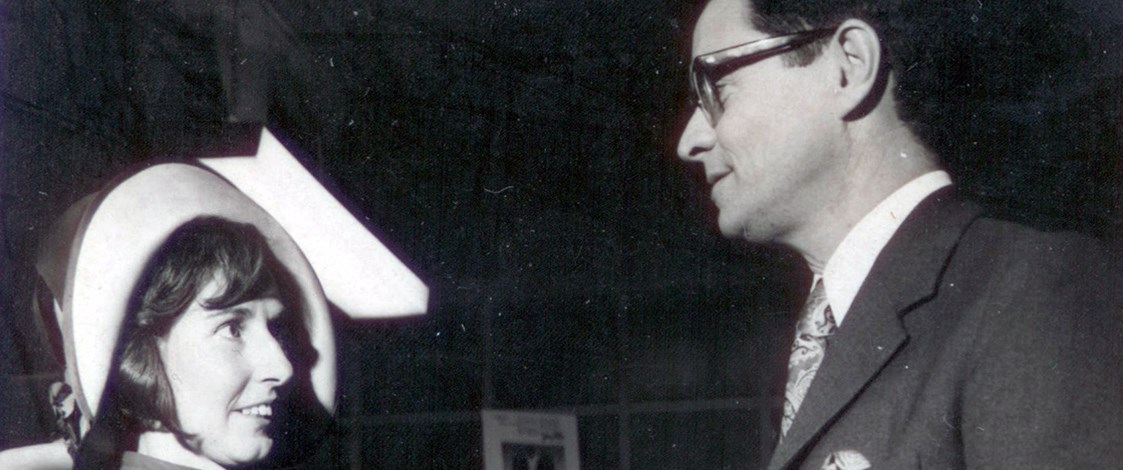
Wynne Fallwell’s talent as a milliner was recognised with the many awards he won for his designs in the 1960s, but he almost took another career path as a professional chef.
In 1952, after attending St Peter’s College in Auckland, Wynne went into the army for compulsory basic training. He opted to stay longer than the normal six weeks and came out as a qualified chef. Wynne’s niece, Sheryl Aitken, presumes the lack of restaurants in this era meant that there were very few jobs available, but Wynne’s love of shopping for and preparing food lasted throughout his life.
After the army, Wynne began work at the clothing manufacturers, Ross & Glendining. By the time he started in 1953, the Dunedin business had expanded to consist of numerous manufacturing, wholesale and retail locations throughout New Zealand. Wynne was based at a large wholesale warehouse on Elliot St in Auckland. The company sold a range of items including linen, clothing and hats, which were either designed under the Fleur label or imported from mainly Australian or British designers.
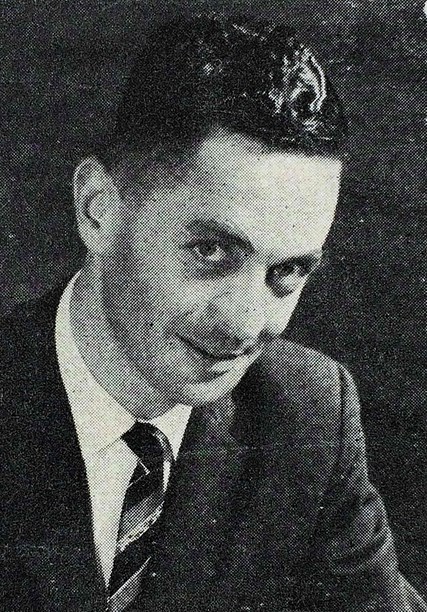
Wynne Fallwell.
Wynne began in the millinery department but was soon moved to the Fleur Millinery workroom where he learnt how to make hats. Before long he was the head designer at Fleur. Wynne and his small staff made top-of-the line model hats which sold throughout the country in major department and other fashion stores. The output was prolific and the brand was very popular.
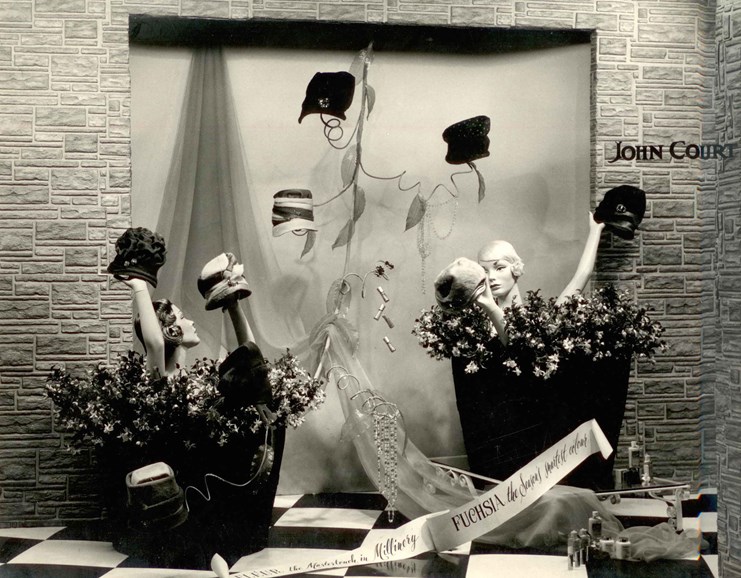
A Fleur Millinery window display at John Courts department store in the early 1960s.
Fleur Millinery closed in the 1960s when Ross & Glendining was acquired by the United Empire Box group of companies. The century-old business was broken up and its assets were sold. Wynne took over the Fleur Millinery workroom staff and started his own model range, Mr Wyn Originals. He opened a hat shop in Canterbury Arcade, near the John Courts Department Store on the corner of Victoria and Queen Streets. An article from the time states: "His hats under their new label have caught on rapidly throughout the country." (source unknown)
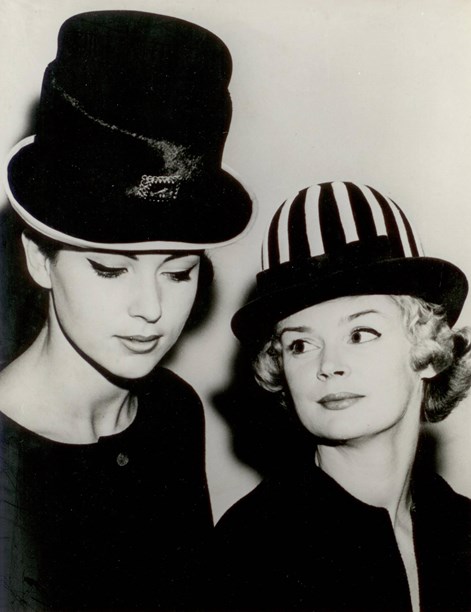
Two Wynne Fallwell hats from the 1960s. Image © Olwyn Fallwell.
At the time of beginning his own business he had won the Auckland Millinery Manufacturers’ Award two years in a row under the Fleur label. His designs were described as "outstanding and very feminine". (source unknown)
Wynne continued to win awards under his Mr Wyn Originals label, including the Golden Hat Pin Award in September 1969. Organised by the Professional Mannequins Association of New Zealand, the awards were judged by fashion journalist Marie Stuttard, New Zealand Herald women’s editor Jean Small and Diane Tinkler who was president of the Mannequins Association. Wynne was presented with a golden crown for winning the Teenage Model section with "a scarlet, navy and white stitched Garbo style with a long red tie". He was placed third in the Extravaganza category with his hat, described as "fiesta pink tulle and silver net with several protruding pink antennae" (Apparel magazine, October 1969).
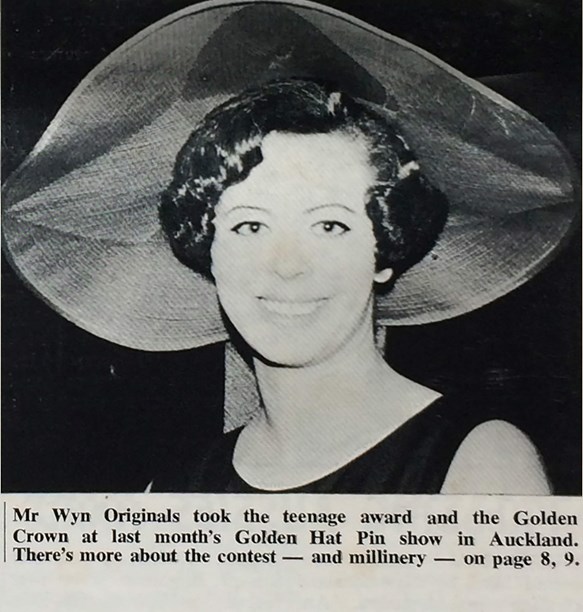
Wynne Fallwell's winning design in the Golden Hat Pin show in 1969. Image © Apparel magazine.
As well as his own label, Wynne made hats for Peter Nola’s Peppertree label. The popularity of hats began to fall during the 1960s as more youthful and casual clothing styles prevailed. The focus on a woman’s hair also affected the wearing of hats, despite milliners designing new styles to complement the fashionable 'big hair'. Facing a downturn in sales, milliners attempted to widen their market – in this case Wynne designed for Peppertree’s teenage and young adult market.
Wynne was interviewed about the millinery industry by Clothing and Footwear News in April 1969. He noted that like many manufacturers he had found it hard to find trained staff, although this did not affect the 'buoyancy' of his own business. The article says Mr Wyn Originals has probably benefited from the fact that some of Auckland’s older model milliners "do not look forward" to the extent that they did. "Mr Fallwell admires this season’s flowing line which moves in a single sweep from brow to side. He particularly likes the bronze and verdigris tonings plus the touch of red that most styles have."
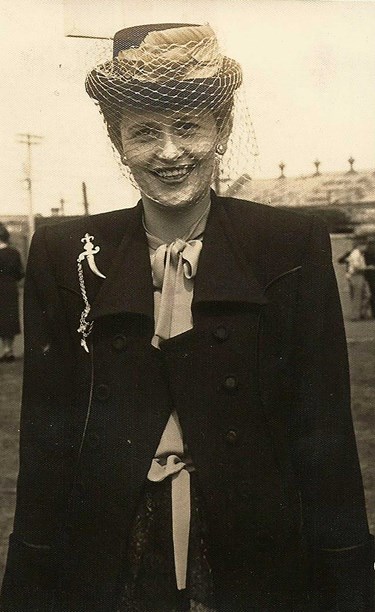
Wynne's sister-in-law Olwyn Fallwell wearing one of his hats.
In 1973 Wynne was selected alongside Vinka Lucas to design the uniforms for Air New Zealand. Vinka designed a turquoise pinafore dress worn over a gold blouse with full leg-of-mutton sleeves and a tailored jacket with a navy trim. Wynne made a matching turquoise Breton hat.

Wynne Fallwell made the hat for the Air New Zealand uniforms in 1973. Image © Air New Zealand.
Wynne closed his business in the mid-1970s to take care of his elderly mother and aunt. Milliner Lindsay Kennett, who was based in Parnell at the time, bought some of his materials and trims.
Wynne Fallwell returned to work in the 1980s, but found that due to changing fashions and cultural norms, there was a limited market for hats. He remained in the retail industry, spending several years working at the hardware store Mitre 10. A photographic collection of his hats, gifted to the New Zealand Fashion Museum, provides an excellent pictorial record of his work and testifies to his skills as a milliner.
Text by Kelly Dix. Banner image of Wynne Fallwell.
Last published May 2015.